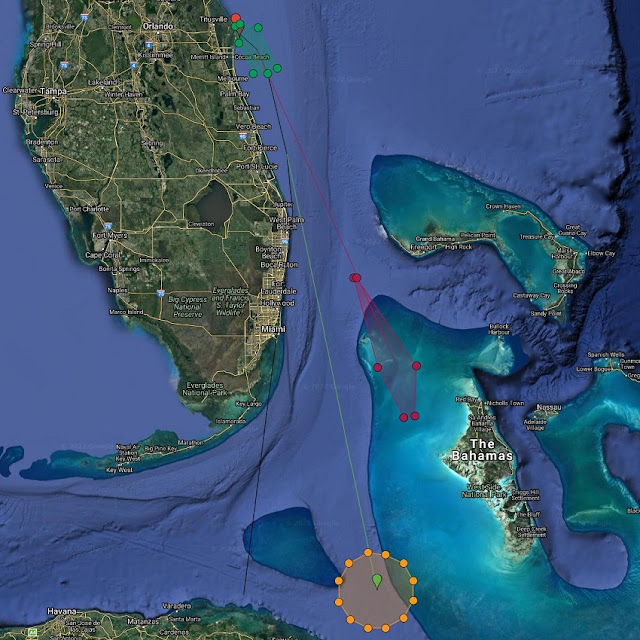I never thought of SpaceX of having a navy, but if you count nine vessels as a navy, it's fair to say they have one. Eric Ralph of Teslarati describes it all:
Continuing what appears to be SpaceX’s preferred pace of activity in 2022, several ships in the company’s navy have deployed to support two Falcon 9 launches scheduled later this week.
A fourth ship will likely head into the Pacific late this week or early next for a third launch, a fifth ship will depart for a different fairing recovery mission near the Bahamas, and a sixth SpaceX ship is sailing back to Florida’s East Coast after recovering a Dragon spacecraft from the Gulf of Mexico. Had all three of the Falcon 9 launches planned over the next week required a drone ship for booster recovery, almost the entirety of SpaceX’s navy – eight of nine SpaceX-leased/owned ships and up to two tugboats – might have simultaneously been at sea by this weekend.
Instead, the rare back-to-back alignment of two commercial missions that will both allow SpaceX to perform return-to-launch-site (RTLS) Falcon 9 booster landings will only require the deployment of one drone ship and up to six ships total within the next few days.
As far as I can tell, tomorrow evening's launch of the Italian COSMO-SkyMed Second Generation, or CSG 2, radar surveillance satellite is still scheduled. The time will be 6:11:50 PM EST, or 2311:50 UTC, and the launch trajectory will mimic the January 14th mission that gave us such beautiful views. This one won't. Our forecast is for high cloud cover and scattered rain. A map from Twitter expert @Raul74Cz may help you visualize it.
Starting at the top, the green tinted area is the launch hazard area that's kept clear of planes and boats. The red line and then red-tinted, oblong, asymmetric pentagon east of the Miami-Dade County area and northwest of Grand Bahama island is the emergency dumping area where the uppers stage and payload will be crashed in case of boostback/Second Engine Start-1 failure. Farther south and connected to the Cape by a light green line is an orange-tinted circle. This is where the fairing halves will be recovered. There's a thin black line that is part of the light green trajectory until it takes a turn to travel down the SSW line of the coast. That's the trajectory of the second stage and CSG-2 satellite.
The booster, B1052, will return to the launch area landing pads on Cape Canaveral Space Force Station.
On January 25th, SpaceX drone ship A Shortfall of Gravitas left Port
Canaveral behind tugboat Zion M Falgout and are headed about 650
kilometers (~400 mi) southeast, farther to the east (right) of the edge in this picture, to recover a Falcon 9 booster scheduled
to launch Starlink 4-7 as early as 3pm EST (20:00 UTC), Saturday,
January 29th. The tugboat is almost certainly the support ship for the booster recovery crew.
As the infomercials say, "but wait! There's more!" Handing the mike back over to Eric Ralph:
On the West Coast, SpaceX ship NRC Quest or GO Quest will likely depart Port of Long Beach on January 30th or 31st to recover a third payload fairing after Falcon 9’s planned February 2nd launch of the National Reconnaissance Office’s NROL-87 spy satellite(s). After launching NROL-87, Falcon 9’s first stage boost back to Vandenberg Space Force Base (VSFB) and land at SpaceX’s Landing Zone 4 (LZ-4) pad.
Meanwhile, SpaceX has as many as four more Starlink missions – three out of Florida and one out of California – potentially scheduled to launch in February 2022.

And, with Starship the launch tempo will be even GREATER, although you won't see booster landings on the drone ship platforms. No landing gear, y'see...
ReplyDeleteGood thing SpaceX is doing something, as Boeing and BO aren't.
ReplyDelete